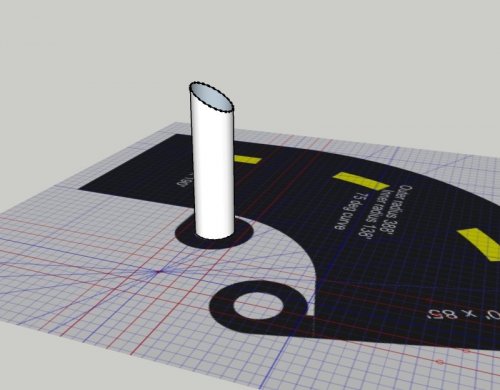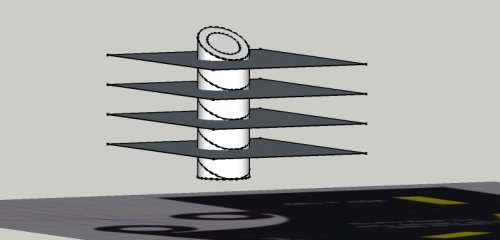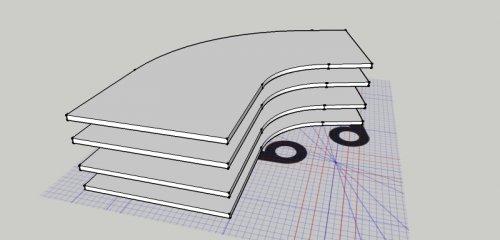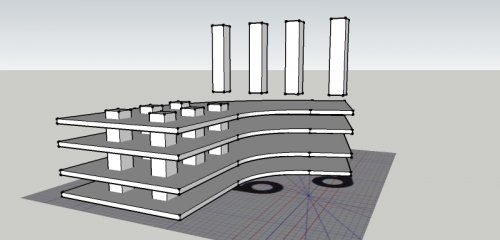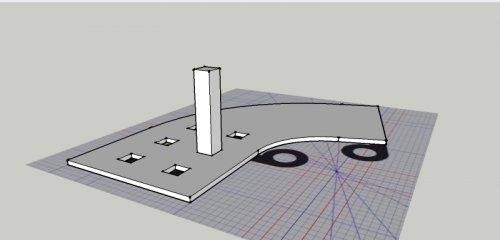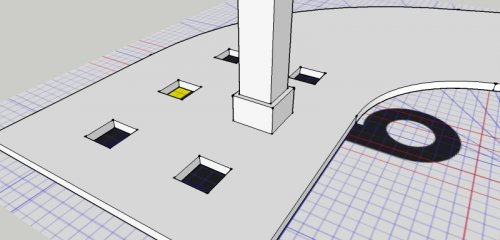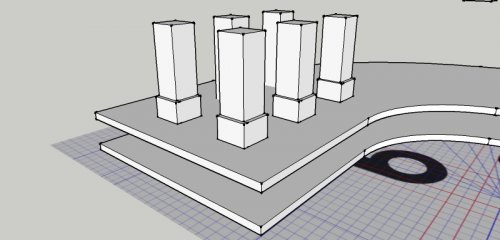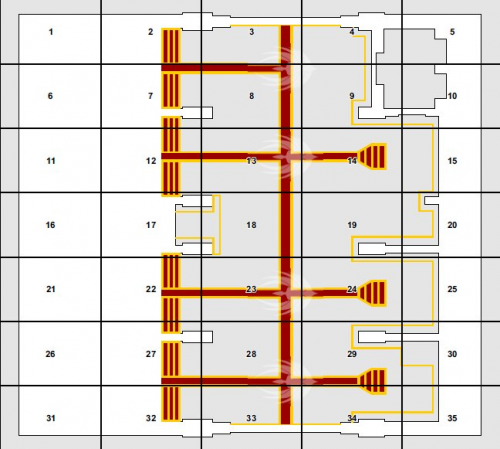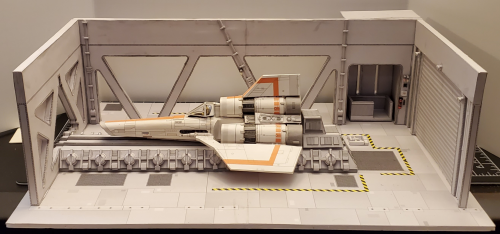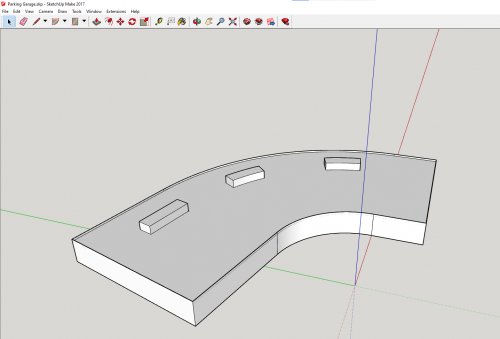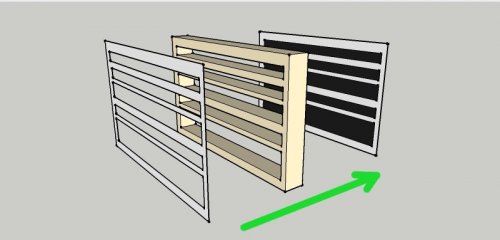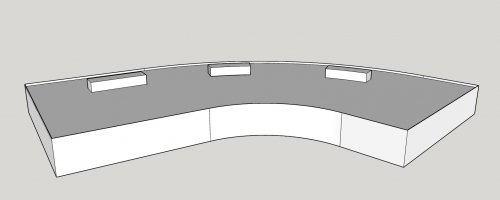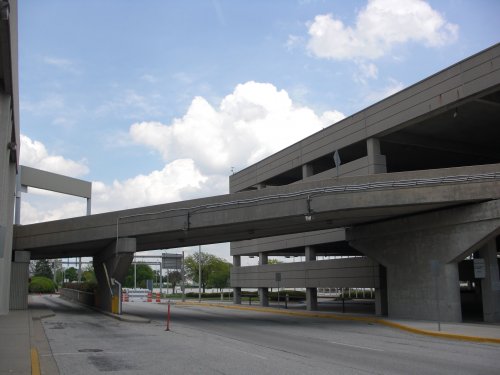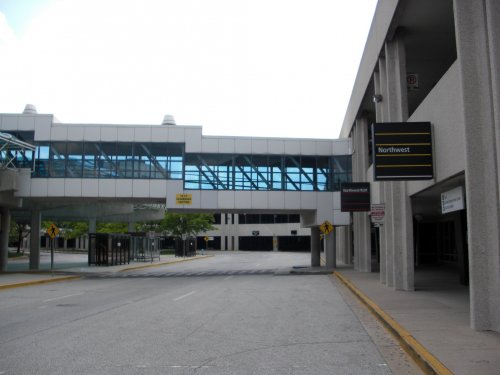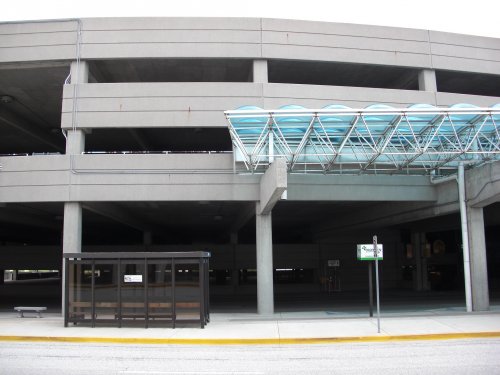I am starting on a 1:400 scale model of the old Indianapolis International Airport to display my diecast airliner collection spanning over 50 years of my home airport's history. I haven't started working on the buildings yet but I would like to use paper/card construction. I do have an understanding of basic concepts of graphic design as well as 3D modeling. However I haven't designed a paper model before (though I do plan as time gets closer to print off and build a few of the airport model kits out there just to get a feel for working with the size of the parts and such). So I'm here mainly to seek advice from experienced modelers as far as establishing the overall design of the models (where to put the various folds and cuts, how to break a complex building shape down into manageable parts, and so on). I'm not sure whether to take the time to learn and use 3D modeling software or to just dive right in and draw out all of the building faces freehand... so that is something I would appreciate some input on as well. Also, material selection... how do you all decide what specific type of paper to use?
I'm currently focused on the design for the ground layout, which will cover 6x8 feet. Not all of it is shown here but this is just to give you an idea. Also I have a closeup of the threshold for Runway 23R to show how everything looks up close. All markings are scale sized and designed to FAA standards (or FHWA standards for the roads leading in and out of the terminal on the land side). This display will be modular (built on 24x24" square plywood project panels) to be taken apart and stored easily, and the terminal building is outlined for correct alignment when setting up. This design will be printed at 300 DPI on a series of 8x8-inch card squares (108 pieces in total!) which will then be cut out and glued to the plywood panels. What kind of paper would work best for this portion of the project? And am I better off printing at home or going with a professional printer?
Don't worry, the aircraft placement mockups won't appear on the finished printout; they will be removed once I've completed the markings for the parking lead-in lines and safety zones.
I do plan to have working, fully adjustable jetways, also made of paper. They will be my own design, based on concepts from Paris Airport Diorama and a couple of others, and customized to match the style of those found at Indianapolis.
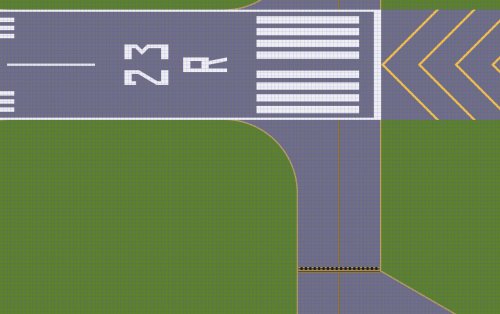
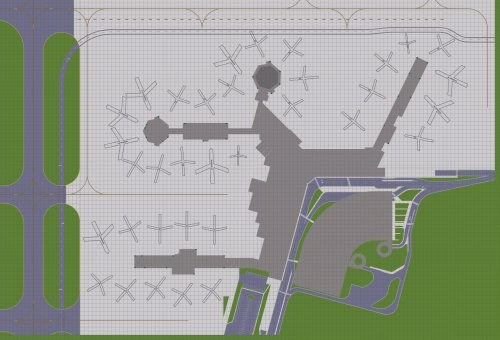
I'm currently focused on the design for the ground layout, which will cover 6x8 feet. Not all of it is shown here but this is just to give you an idea. Also I have a closeup of the threshold for Runway 23R to show how everything looks up close. All markings are scale sized and designed to FAA standards (or FHWA standards for the roads leading in and out of the terminal on the land side). This display will be modular (built on 24x24" square plywood project panels) to be taken apart and stored easily, and the terminal building is outlined for correct alignment when setting up. This design will be printed at 300 DPI on a series of 8x8-inch card squares (108 pieces in total!) which will then be cut out and glued to the plywood panels. What kind of paper would work best for this portion of the project? And am I better off printing at home or going with a professional printer?
Don't worry, the aircraft placement mockups won't appear on the finished printout; they will be removed once I've completed the markings for the parking lead-in lines and safety zones.
I do plan to have working, fully adjustable jetways, also made of paper. They will be my own design, based on concepts from Paris Airport Diorama and a couple of others, and customized to match the style of those found at Indianapolis.




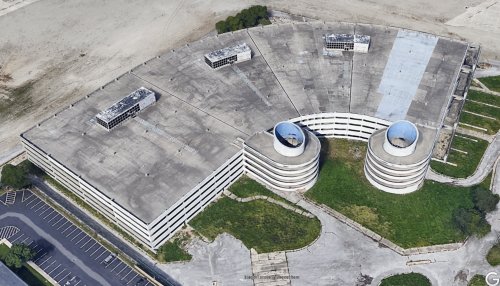
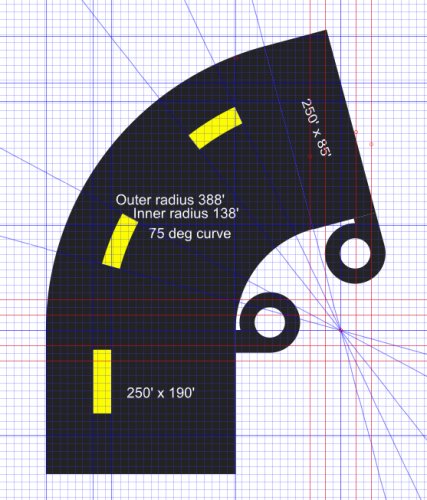
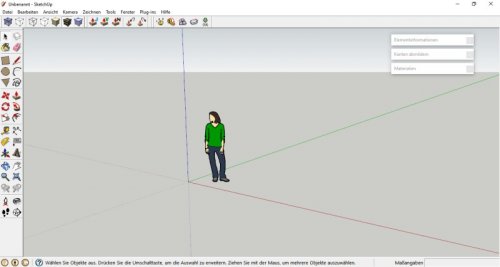
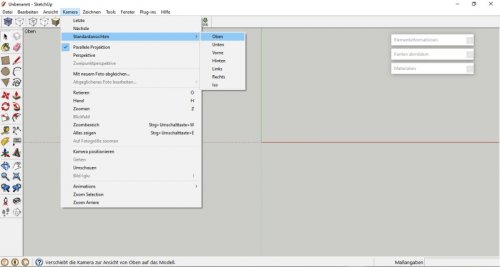
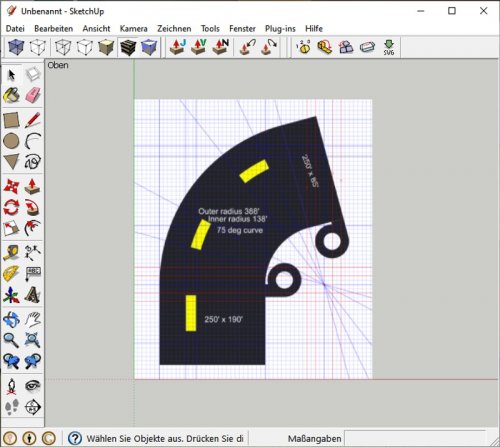
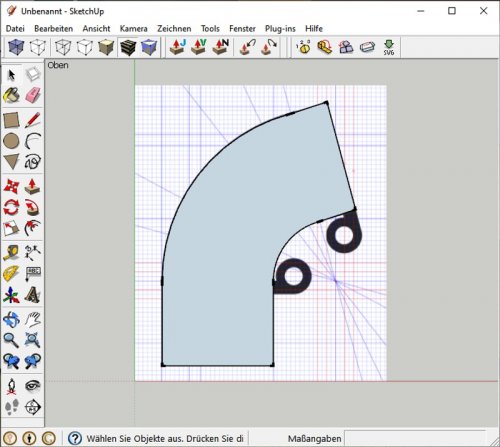
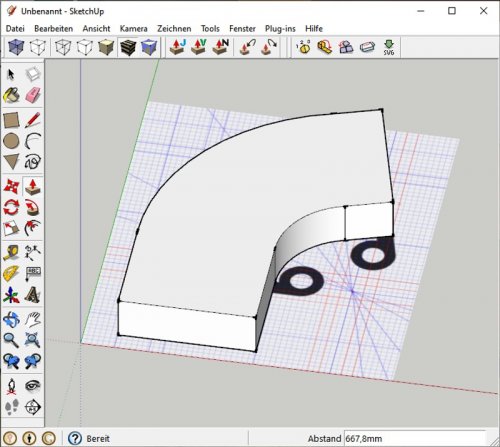
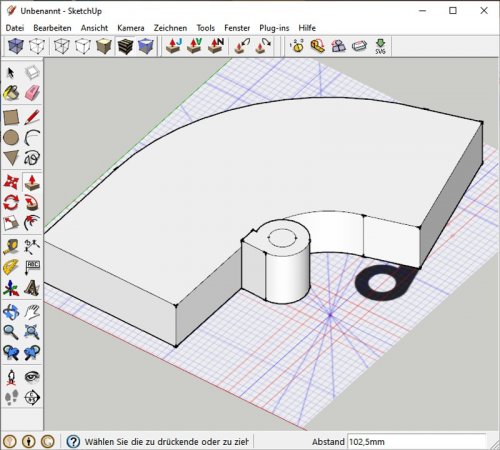
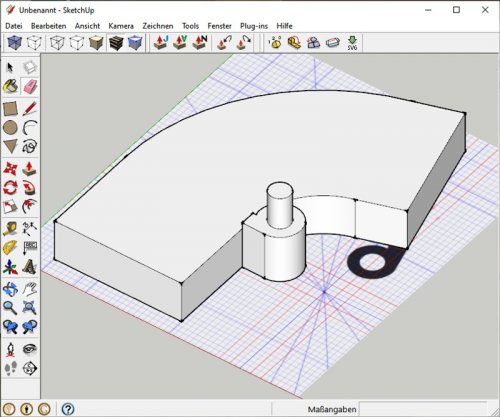
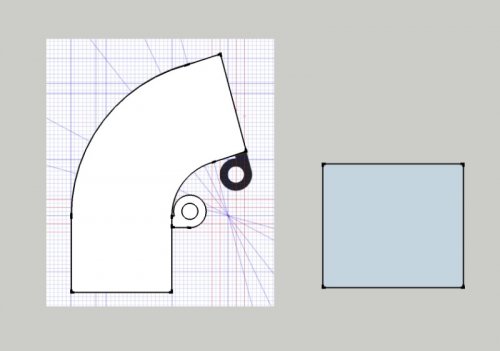
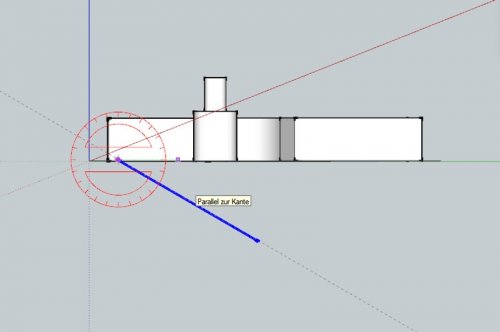
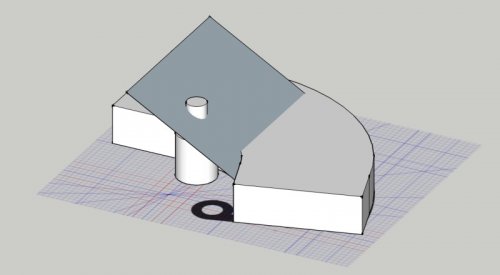
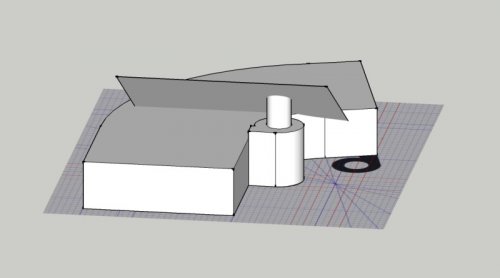
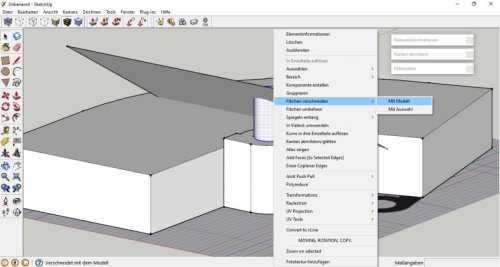
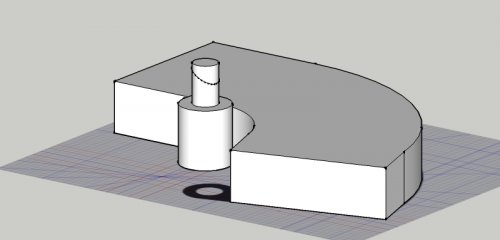
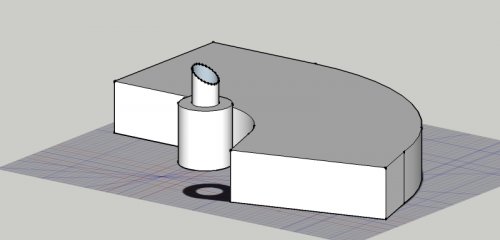
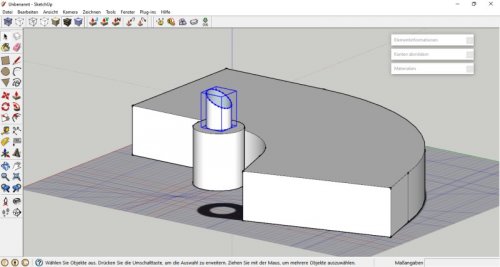


 Well then.
Well then.